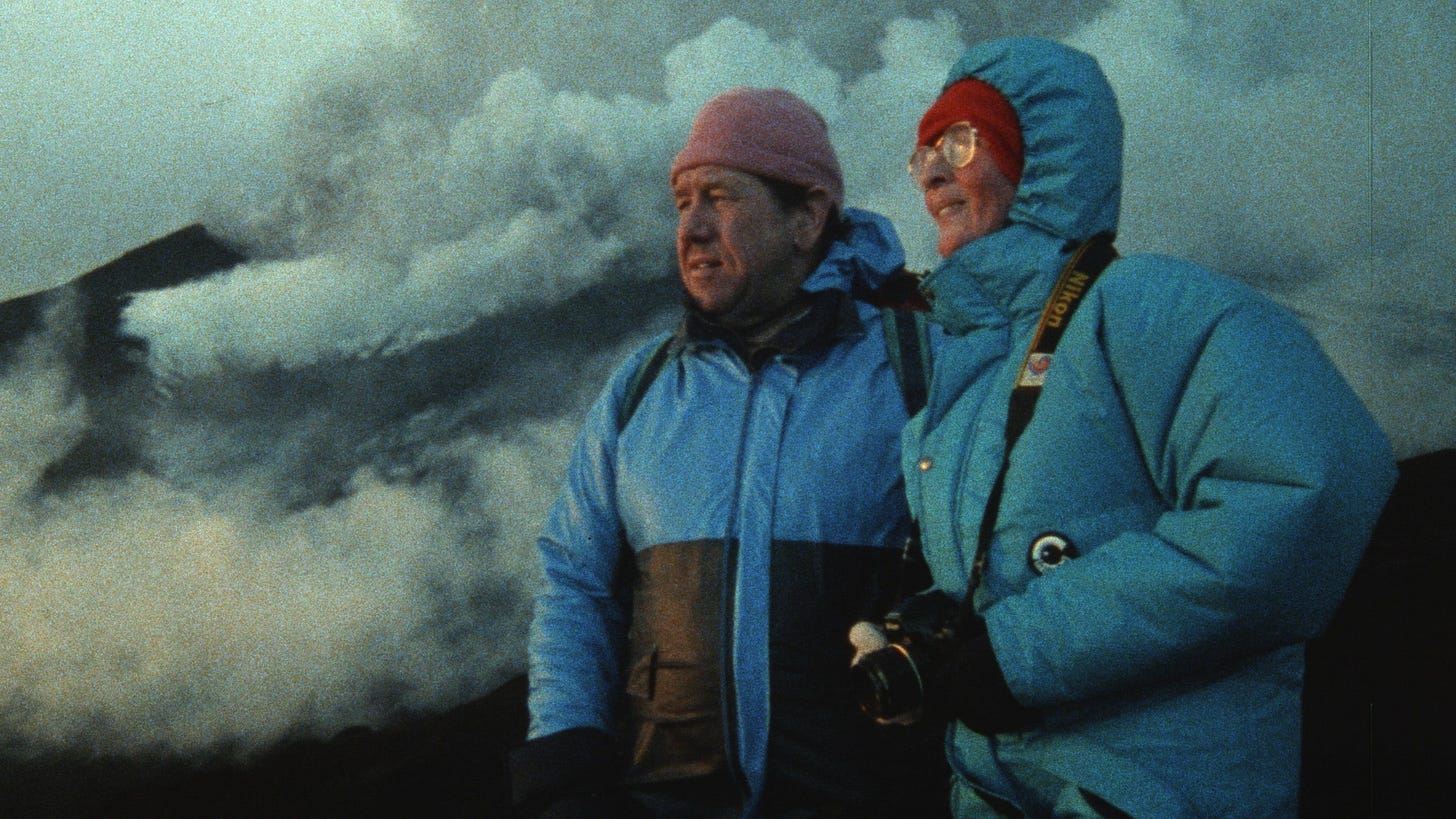Fire of Love
A gripping documentary about a French couple united by their love of the world's most dangerous volcanoes and each other.
Katia and Maurice Krafft lived by their own lights — in their case, the fiery glow of molten lava burning at thousands of degrees, capable of incinerating them in an instant.
Their strange but compelling story of romance and scientific inquiry is told in “Fire of Love,” a gripping new documentary from director Sara Dosa. It is based on he Kraffts’ all-too-brief lives, using photographs and video they took themselves over nearly three decades as some of the foremost volcanologists in the world.
The imagery alone is worth the price of admission, arresting visuals of active volcanoes like nothing you’ve seen, or even imagined. Like living organisms, each seems to have its own personality and is open to fits of mood. Some belch, others explode, ooze, drip, splatter and spill.
The “red” volcanoes are the most spectacular, and relatively safe to be around if you know what you’re doing. But watch out for their “gray” siblings, vengeful killers who bury victims in clouds of smoke and ash.
Some of the lava braids itself into incredible strands of rock that resemble a giant’s hair. Incredible underwater shots show the rock bubbling and bursting, expanding as it rapidly cools into incredible unworldly shapes.
Rosa accompanies many of these sequences with love songs, often with closeups of Katia tenderly stroking the new-formed lava with her fingertips. Between the tendrils of fresh new earth, byzantine shapes and the tactile human interaction, it’s hard to miss the intended eroticism.
No less interesting are the Kraffts themselves. Born and raised just miles apart in post-war France, they were young academics with a lust for adventure. Insouciant and puckish, Maurice resembles a race-car driver with his curly mop of hair and roguish smile. Katia is small, bespectacled and pixie-cut, a mountain of resolve behind a shy demeanor.
They traveled the globe, nearly always together, going wherever the next major eruption of a volcano was happening. Often with just the barest of protective gear, they scrambled right up to the edge of the lava flows, standing and smiling within feet of certain death.
They resolved early in their marriage never to have children and to spend as much time as possible in the field. They would return, reluctantly, to their home base to edit videos and photo and write books about their findings, just long enough to raise money to go back out again.
This led to some media notoriety in their younger days, as the camera clearly was smitten with the story of lovers defying death on a daily basis. Dosa, while clearly undertaking this examination with admiration, isn’t afraid to show the Kraffts’ self-promoting side.
Maurice in particularly is something of a camera hog, loving to share his dream of piloting a canoe down a stream of lava. He actually did take a boat out on a lake of sulfuric acid that ate right through their equipment. He talks openly of not being afraid of dying young, and indeed sees it as inevitable.
“When you can die at any moment, what do you leave behind?” is the question he asks. Clearly, it’s a legacy of passion and documentation, culminating in this documentary.
The film is narrated by Miranda July and supplemented with clever animated sequences to illustrate the portions of the Krafft’s lives that went undocumented. Sometimes it can be a little over-the-top — “Understanding is love’s other name” — but doesn’t detract from this lovely, intimate portrait.
Maurice was right in the end. The Kraffts died in 1991 along with many others while responding to an eruption in Japan. You don’t need to guess from watching “Fire of Love” that this sudden ending, while robbing us of years more of their blend of scientific and soulful exploration, would not have saddened them one bit.





